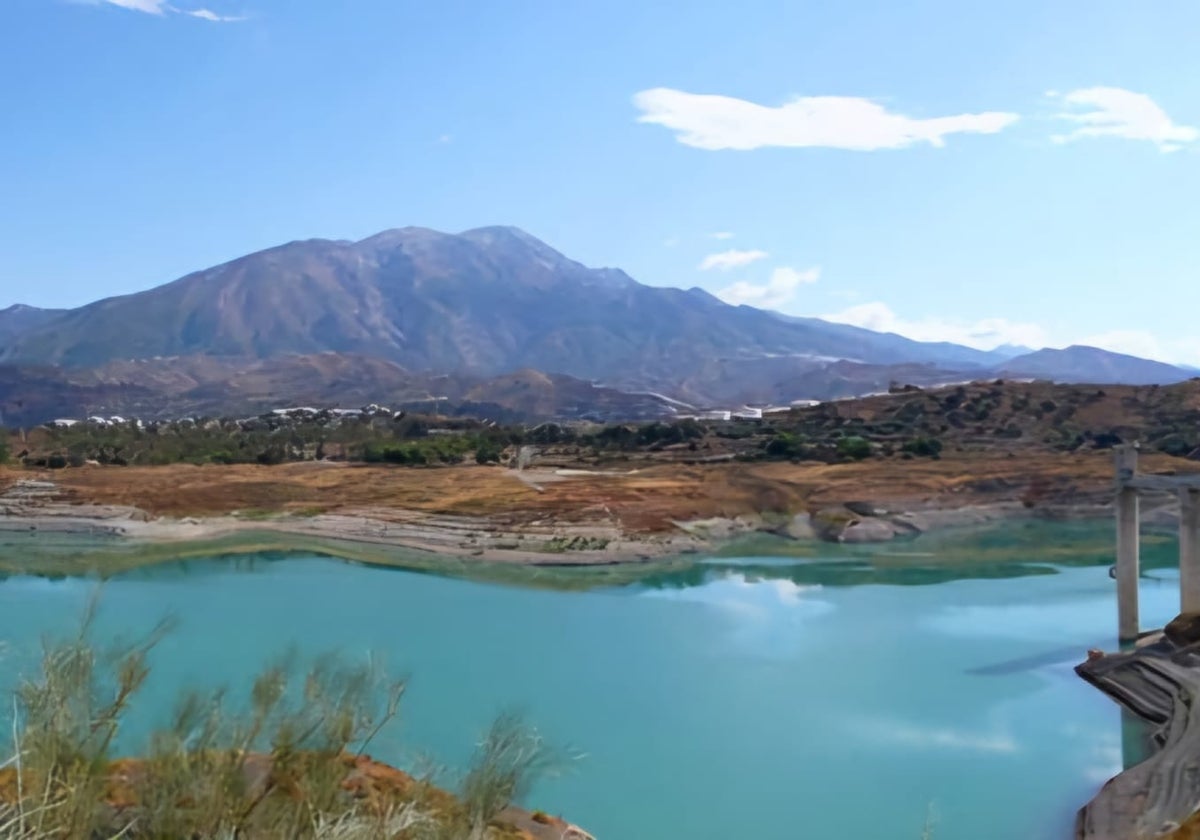Junta's drought committee eases water restrictions throughout Malaga province: here's the lowdown
With the heavy rains from two recent 'Dana' storms boosting the levels, this is the current state of the reservoirs in the area
The heavy rains from those two recent 'Dana' weather events has allowed for some pre-Christmas cheer in terms of Malaga province's ongoing drought situation. Only the Axarquia area remains in the 'emergency zone', but it too will benefit from the increased water supply, given the evident improvement in volumes at La Viñuela reservoir. The Costa del Sol will reach normality in January and the Serranía de Ronda is already there. In the meantime, Malaga city will improve its water supply level next month and will go from 'extreme drought' (D3) to 'severe drought' (D2). The lower and upper river basins of the Guadalhorce are also at this threshold.
The Junta de Andalucía's drought management committee, which held an extraordinary meeting this Thursday, has agreed to make the water restriction measures more flexible. They have now approved the modification of the measures adopted in the October meeting of the committee for the Western Costa del Sol , Guadalhorce-Limonero (Malaga) and Viñuela-Axarquía systems. In the case of the Western Costa del Sol, urban water consumption may not exceed 225 litres per inhabitant per day, which is 25 litres more than at present. In Guadalhorce-Limonero and Viñuela-Axarquía the maximum permitted is increased from 180 litres per person per day to 200.
Likewise, in the Western Costa del Sol system, the use of non-conventional resources such as water from desalination and regenerated water will be maximised. In the latter case, and once the concession rights have been satisfied, the resources that have not been used can be used henceforth, and always with the corresponding authorisation from the governing bodies, for other uses such as garden irrigation. Acosol - one of the main public water supply companies on the Costa - has been working on this for the last few months. It is a cumbersome process that involves intense bureaucracy to justify that the water quality complies with the new government decree.
With regard to the desalination plant, by July it will be at full capacity producing 20 million cubic metres per year, the capacity for which it was designed. In addition, the Costa del Sol will continue to draw on supplies from the Guadalmansa (Estepona) and Fuengirola wells.
It should be remembered that the La Concepción reservoirs stores almost 28 million cubic metres. However, due to its size, it can never guarantee more than seven months of trouble-free supplies. As such, although this part of the coast is already close to normal levels, it is likely to fall into drought again towards spring if the seasonal rains are not forthcoming.
In the Guadalhorce-Limonero system (Malaga), the suspension of water transfer to the Viñuela-Axarquía system is maintained and, in accordance with the Junta's PES (special drought plan), the use of underground resources (Aljaima, Fahala and, in a few months, Bajo Guadalhorce wells) and flowing resources (Aljaima weir) will be maximised.
As for the Viñuela-Axarquía system, the use of underground and flowing resources, wells and the Chíllar river will be maximised. No water will continue to be received from Malaga city, something that has been happening for many months at a rate of 270 litres per second.
Malaga isn't down to its last dregs of water
For the areas in Malaga province without such regulation the statuses of 'exceptional drought' (D4) and 'extreme drought' (D3) have changed to 'moderate drought' (D1) in the system of the Penibética mountain range between the Guadiaro and Guadalhorce river basins, as well as in the Guadalhorce headwaters. Thus, for urban use, the volumes supplied in municipal headwater reservoirs or from the collective network may not exceed 235 litres per inhabitant per day, taking into account the total resources available on tap.
In the system of the lower basin of the Guadalhorce river, the volumes supplied in municipal headwater reservoirs or from the collective network may not exceed 200 litres per inhabitant per day. As for the Cuenca del río Guadiaro system, no restrictions are set.
In the coming months, the detailed monitoring of how both supply and demand are progressing will continue, as well as the analysis of the application of the measures adopted to find out whether it is necessary to take any further action. The measures agreed at Thursday's committee meeting may be reviewed at the beginning of 2025 depending on the hydrological situation.
For the time being there is no good news for agriculture, which will continue to receive only the meagre amounts allocated for emergency irrigation.

